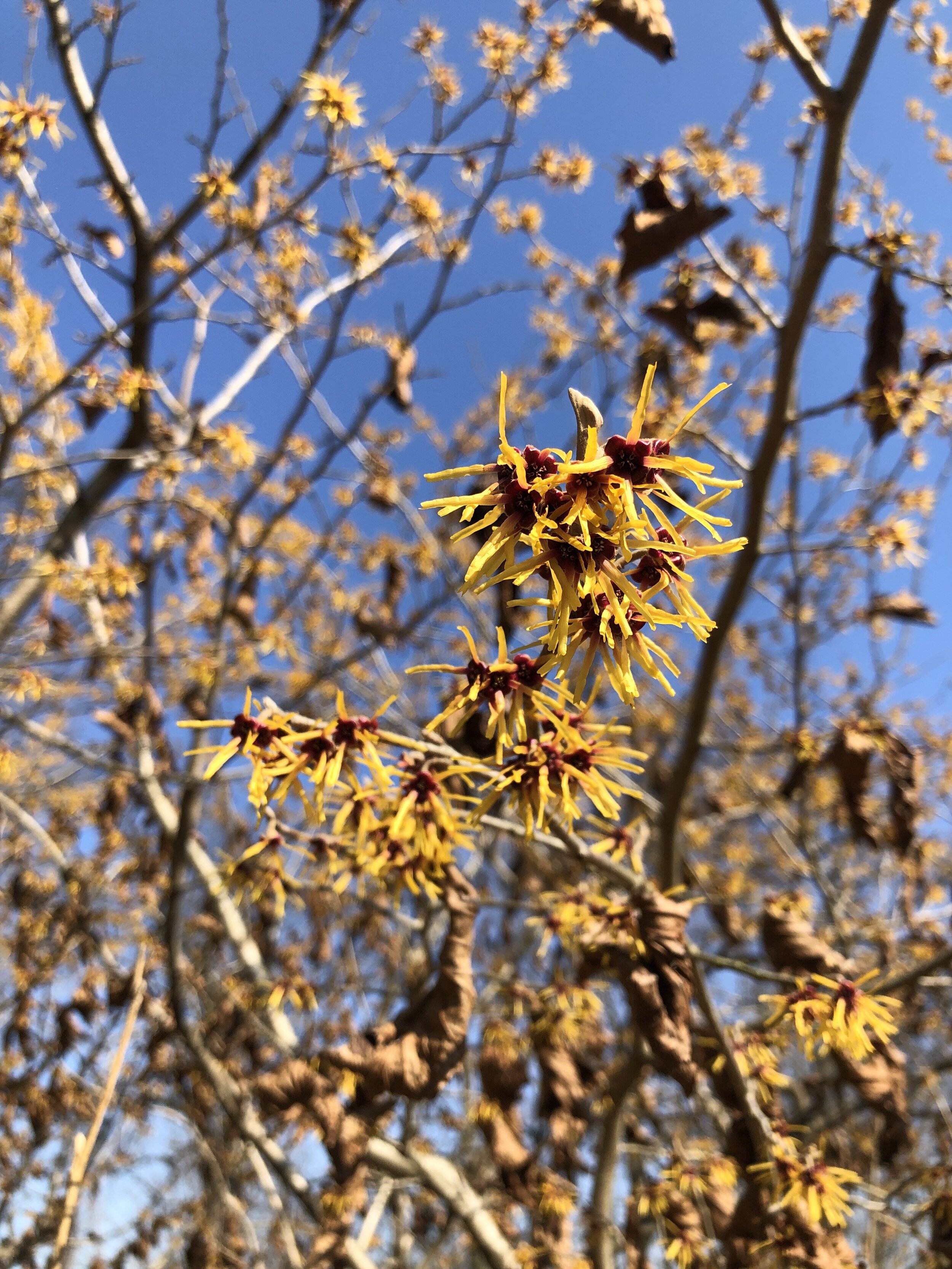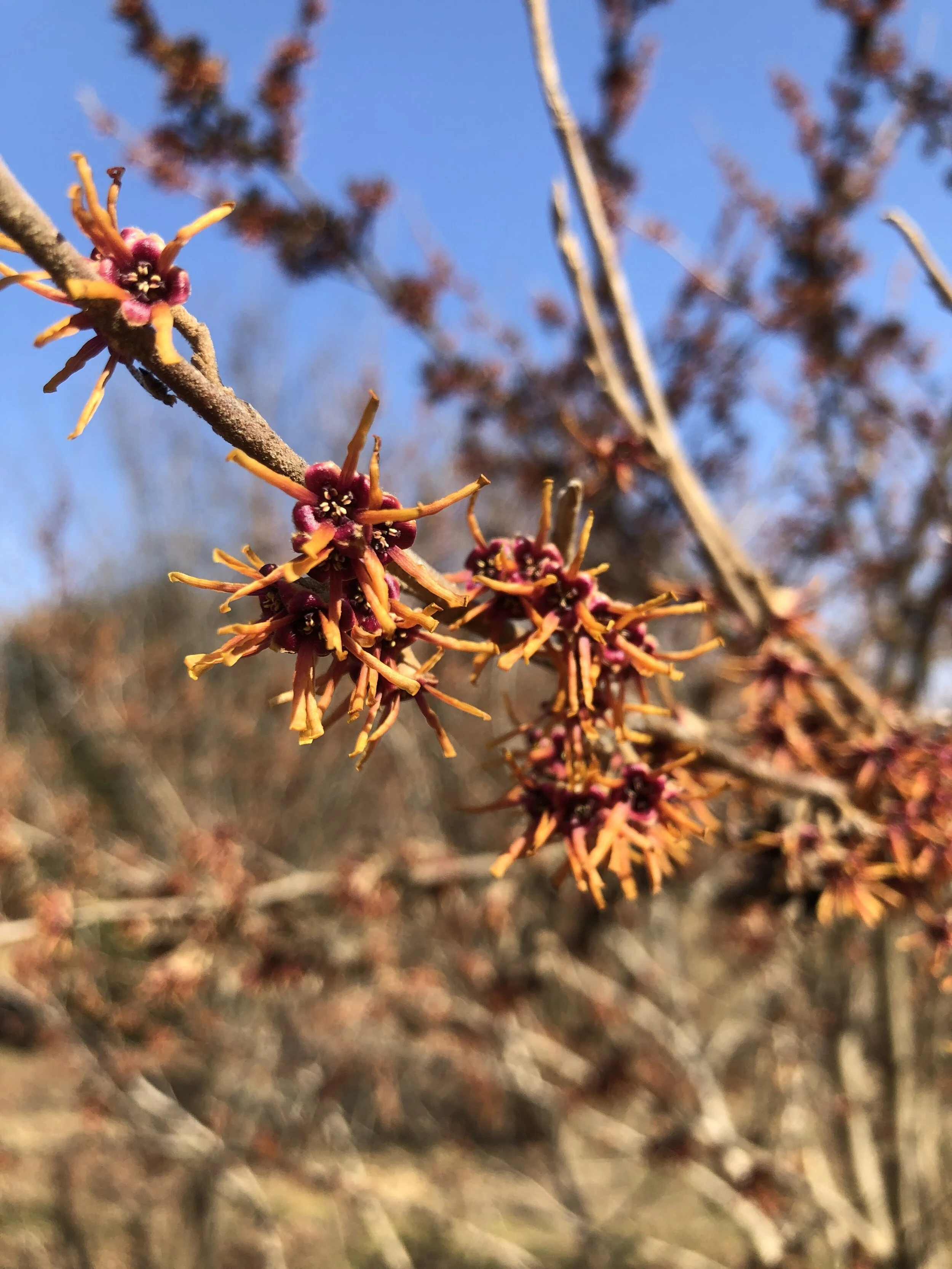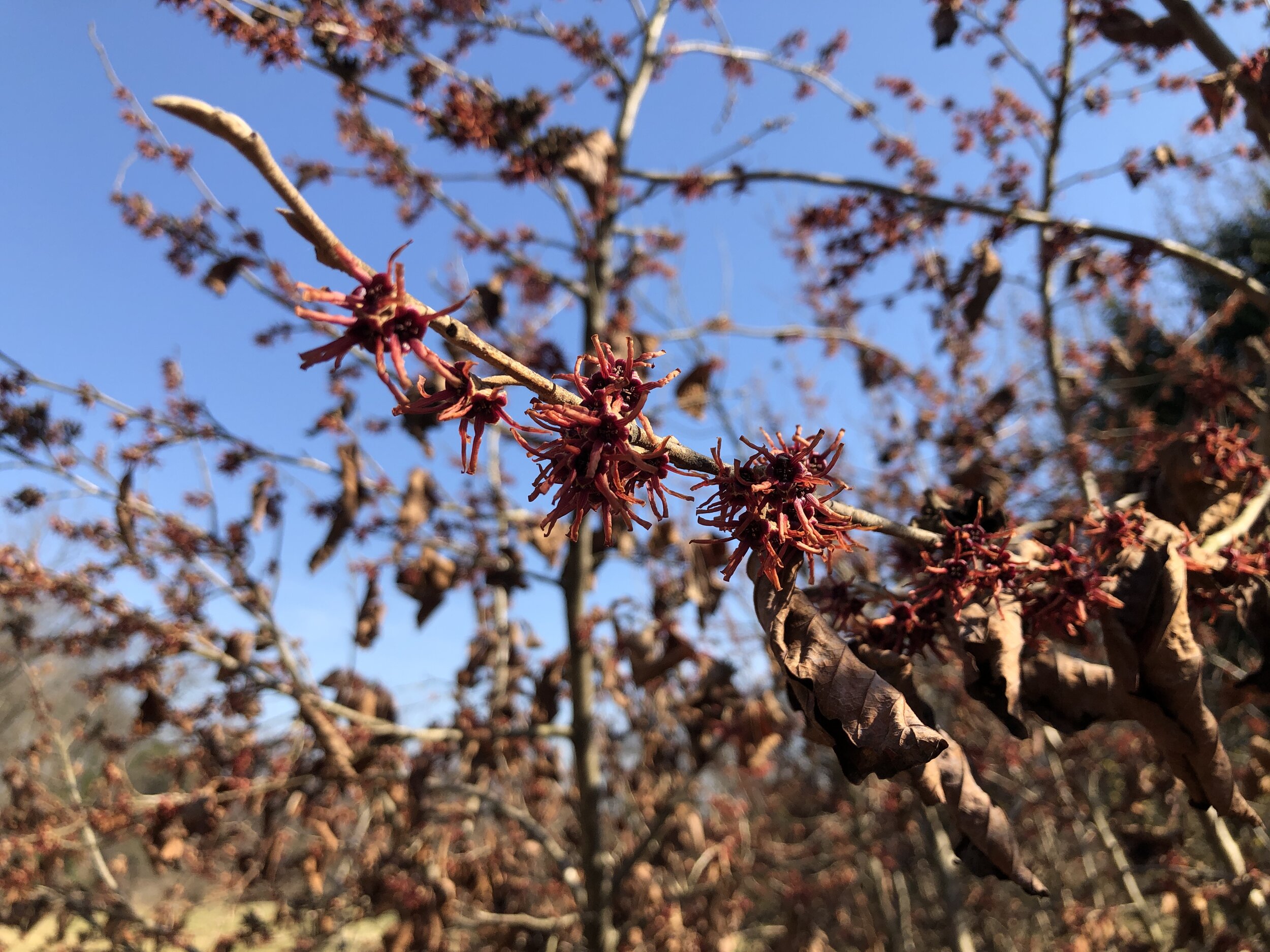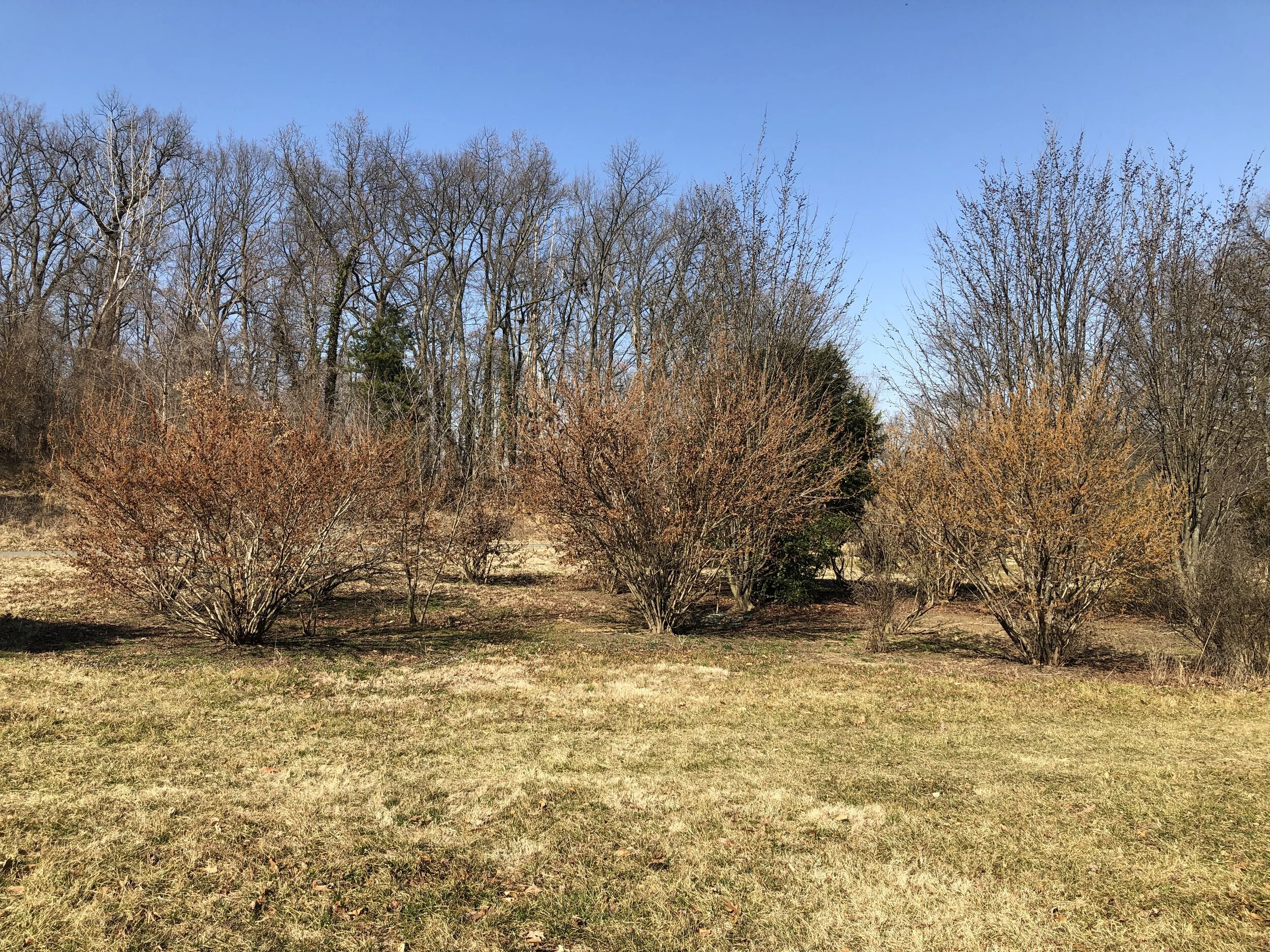An appreciation for witch hazels
It’s the time of year where almost everything is a shade of brown, we’ve been in quarantine for a year, cold temperatures have kept us indoors, and things generally feel kind of bleak. I was encouraged last week by the first signs of spring: new growth, birds chirping, and temperatures in the 70s here in DC, and decided to check out the witch hazels in bloom at the National Arboretum.
Witch hazels, members of the genus Hamamelis, are great plants for this moment. The colorful, finely textured flowers and spicy-sweet fragrance of species H. mollis, H. japonica, and H. vernalis get us through the doldrums of winter and into early spring. Hamamelis virginiana, the species native to large portions of the eastern United States, is in bloom in the fall between October and December. You can think of this genus as winter’s bookends.
As a research institution, the arboretum has multiple species and cultivars on display in close proximity so you can see a wide range of flower and habit. I did my best below to identify the species based on the USNA’s plant finder since so few were tagged.
Flower
Hamamelis mollis ‘Early Bright’
Hamamelis mollis
Hamamelis vernalis
Hamamelis x intermedia ‘Ruby Glow’
Habit
The habit of ‘Ruby Glow’ is not as impressive as its bloom, but could be striking when planted as a specimen.
The blooms of Hamamelis vernalis and intermedia hybrids create a warm copper glow, but to not stand out well from afar against similarly colored deciduous trees.
Yellow blooms brighten a garden - especially when contrasted with a dark evergreen foliage backdrop.







